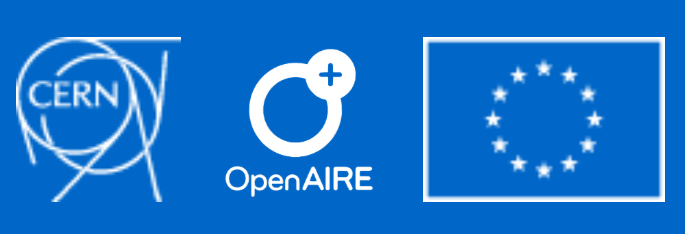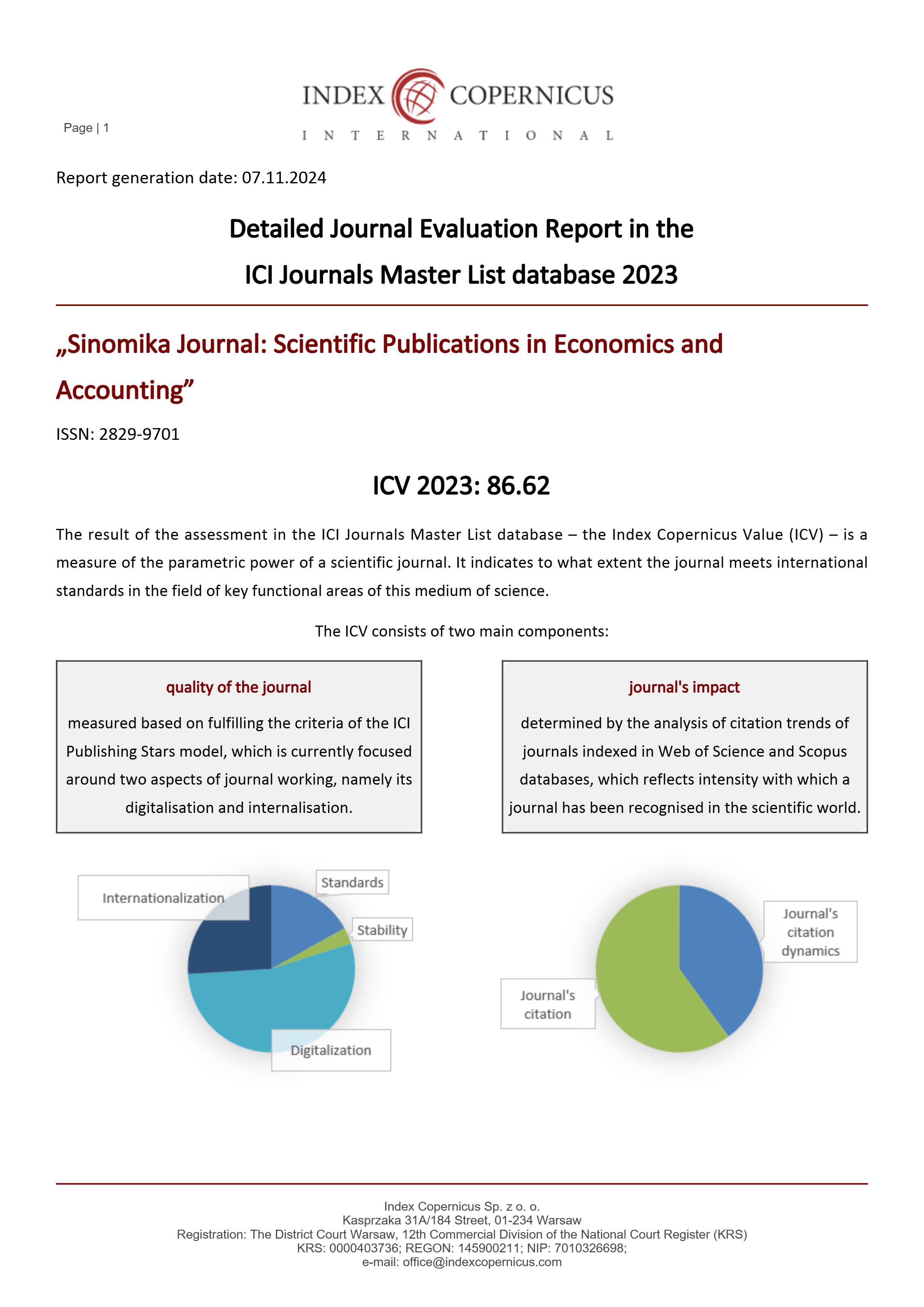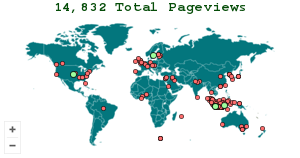Pengaruh CSR Terhadap Niat Bergabung Generasi Milenial untuk Bekerja di PT Telkom Indonesia Tbk
DOI:
https://doi.org/10.54443/sinomika.v1i6.786Keywords:
Corporate Social Responsibility (CSR), Altruism, Organizational Attractiveness, intention to joinAbstract
The complex, competitive, and ever-changing operational conditions and stakeholder expectations that characterize the business environment have motivated organizations to utilize social responsibility (CSR) as a strategic instrument that marks them as employers of quality employees. Some of the companies can carry out CSR well; one of these companies is PT Telkom Indonesia Tbk. This research uses the associative method. The data collection technique uses primary data as a result of distributing questionnaires using the Google form. The population in this study is all residents who are looking for work in the DKI Jakarta area who feel the implementation of CSR carried out by PT Telkom Indonesia Tbk. The sample method used in this research is non-probability sampling, with the sampling technique being purposeful sampling. There are 4 variables in this study, where the independent variables are CSR (X1), altruism (X2 Moderation), and organizational attractiveness (X3 Moderation), and the dependent variable is intention to join (Y). This measurement uses a Likert scale with a scale of 1–5. Data processing uses IBM SPSS version 23. Based on the results of hypothesis testing in this study, CSR (X1) has a positive and significant effect on intention to join (Y). The altruism variable (X2) does not strengthen the effect of CSR (X1) on intention to join (Y). Organizational Attractiveness Variable (X3) strengthens the effect of CSR (X1) on Intention to Join (Y). CSR, which is moderated by the attractiveness of a good organization, can increase the interest of the millennial generation in joining the workforce.
Downloads
References
Akhouri, A., & Chaudhary, R. (2019). Employee perspective on CSR: a review of the literature and research agenda. Journal of Global Responsibility, 10(4), 355–381. https://doi.org/10.1108/JGR-11-2018-0057
Allen, N. J., & Rushton, J. P. (1983). Personality Characteristics of Community Mental Health Volunteers: A Review. Nonprofit and Voluntary Sector Quarterly, 12(1), 36–49. https://doi.org/10.1177/089976408301200106
Alonso-Almeida, M. D. M., & Llach, J. (2019). Socially responsible companies: Are they the best workplace for millennials? A cross-national analysis. Corporate Social Responsibility and Environmental Management, 26(1), 238–247. https://doi.org/10.1002/csr.1675
Aminah, A., & Dinata Pemuka, R. . (2023). Kinerja Keuangan, Pengungkapan Corporate Social Responsibility: Dampaknya Pada Nilai Perusahaan: Studi Kasus Pada Perusahaan Manufaktur Sektor Industri Barang Konsumsi Yang Terdaftar di Bursa Efek Indonesia Tahun 2019-2020. SINOMIKA Journal: Publikasi Ilmiah Bidang Ekonomi Dan Akuntansi, 1(5), 1127–1134. https://doi.org/10.54443/sinomika.v1i5.586
Arikunto, S. (2016). Prosedur penelitian suatu pendekatan praktek. Renika Cipta.
Asante Boadi, E., He, Z., Bosompem, J., Opata, C. N., & Boadi, E. K. (2020). Employees’ perception of corporate social responsibility (CSR) and its effects on internal outcomes. Service Industries Journal, 40(9–10), 611–632. https://doi.org/10.1080/02642069.2019.1606906
Chahal, H., & Sharma, R. D. (2006). Implications of Corporate Social Responsibility on Marketing Performance: A Conceptual Framework. International Management, 6(1), 205–216.
del Mar García-De los Salmones, M., & Perez, A. (2018). Effectiveness of CSR Advertising: The Role of Reputation, Consumer Attributions, and Emotions.
Corporate Social Responsibility and Environmental Management, 25(2), 194–208. https://doi.org/10.1002/csr.1453
Donia, M. B. L., Ronen, S., Tetrault Sirsly, C. A., & Bonaccio, S. (2019). CSR by Any Other Name? The Differential Impact of Substantive and Symbolic CSR Attributions on Employee Outcomes. Journal of Business Ethics, 157(2), 503–523. https://doi.org/10.1007/s10551-017-3673-5
Ferdinand, A. (2014). Metode penelitian manajemen: Pedoman penelitian untuk penulisan skripsi tesis dan desrtasi ilmu manajemen. Badan Penerbit Universitas Diponegoro.
Ghosh, K. (2017). Corporate reputation, social performance, and organizational variability in an emerging country perspective. Journal of Management and Organization, 23(4), 545–565. https://doi.org/10.1017/jmo.2016.25
Ghozali, I. (2016). Aplikasi analisis multivariete IBM SPSS 23. Badan Penerbit Universitas Diponegoro.
Hamim, M. (2021). Corporate Social Responsibility (Kajian Korelasi Program CSR terhadap Citra Perusahaan). Duta Media.
Highhouse, S., Lievens, F., & Sinar, E. F. (2003). Measuring attraction to organizations. Educational and Psychological Measurement, 63(6), 986–1001. https://doi.org/10.1177/0013164403258403
Ikhide, J. E., Tarik Timur, A., & Ogunmokun, O. A. (2021). The strategic intersection of HR and CSR: CSR motive and millennial joining intention. Journal of Management and Organization. https://doi.org/10.1017/jmo.2021.47
Jiang, H., & Luo, Y. (2020). Driving Employee Engagement through CSR Communication and Employee Perceived Motives: The Role of CSR-Related Social Media Engagement and Job Engagement. International Journal of Business Communication. https://doi.org/10.1177/2329488420960528
Klimkiewicz, K., & Oltra, V. (2017). Does CSR Enhance Employer Attractiveness? The Role of Millennial Job Seekers’ Attitudes. Corporate Social Responsibility and Environmental Management, 24(5), 449–463. https://doi.org/10.1002/csr.1419
Kotek, K., Schoenberg, A. M., & Schwand, C. (2018). CSR Behavior: Between Altruism and Profit Maximization. 159–169. https://doi.org/10.1007/978-3-319-93629-1_8
Kumari, S., & Saini, G. K. (2018). Do instrumental and symbolic factors interact in influencing employer attractiveness and job pursuit intention? Career Development International, 23(4), 444–462. https://doi.org/10.1108/CDI-03-2018-0069
Lievens, F., & Slaughter, J. E. (2016). Employer Image and Employer Branding: What We Know and What We Need to Know. Annual Review of Organizational Psychology and Organizational Behavior, 3(December 2015), 407–440. https://doi.org/10.1146/annurev-orgpsych-041015-062501
Mulyani Setiasari, L., Hanafiah, Khoeriyah, N. D. ., & Mulyanto, A. . (2022). Basic Training Management Of Civil Servants In Improving The Work Achievement Of PNS In West Java Province BPSDM. International Journal of Social Science, Education, Communication and Economics (SINOMICS JOURNAL), 1(4), 327–336. https://doi.org/10.54443/sj.v1i4.42
Onukwuba, 2020.pdf. (n.d.).
Ouyang, Z., Zhang, Y., & Hu, X. (2021). Negative publicity and potential applicants’ intention to apply amid a discrimination scandal: a moderated
mediation model. Personnel Review, 50(1), 129–142. https://doi.org/10.1108/PR-09-2019-0510
Paraskevaidis, P., & Andriotis, K. (2017). Altruism in tourism: Social Exchange Theory vs Altruistic Surplus Phenomenon in host volunteering. Annals of Tourism Research, 62, 26–37. https://doi.org/10.1016/j.annals.2016.11.002
Rank, S., & Contreras, F. (2021). Do Millennials pay attention to Corporate Social Responsibility in comparison to previous generations? Are they motivated to lead in times of transformation? A qualitative review of generations, CSR and work motivation. International Journal of Corporate Social Responsibility, 6(1). https://doi.org/10.1186/s40991-020-00058-y
Rim, H., Park, Y. E., & Song, D. (2020). Watch out when expectancy is violated: An experiment of inconsistent CSR message cueing. Journal of Marketing Communications, 26(4), 343–361. https://doi.org/10.1080/13527266.2018.1523216
Rim, H., Yang, S. U., & Lee, J. (2016). Strategic partnerships with nonprofits in corporate social responsibility (CSR): The mediating role of perceived altruism and organizational identification. Journal of Business Research, 69(9), 3213–3219. https://doi.org/10.1016/j.jbusres.2016.02.035
Rodrigues, D., & Martinez, L. F. (2020). The influence of digital marketing on recruitment effectiveness: a qualitative study. European Journal of Management Studies, 25(1), 23–44. https://doi.org/10.1108/ejms-09-2020-002
Russo, A., & Tencati, A. (2007). Formal vs. Informal CSR Strategies. https://philpapers.org/rec/RUSFVI-2
Santrock, J. W. (2009). Educational Psychology, diterjemahkan oleh Diana Angelica. Salemba Humanika.
Stojanović, A., Mihajlović, I., Safronova, N. B., Kunev, S., & Schulte, P. (2021). The multi-criteria analysis of corporate social responsibility: A comparative study of Russia, Bulgaria and Serbia. Journal of Management and Organization, May. https://doi.org/10.1017/jmo.2020.40
Sugiyono, P. (2017). Metode penelitian bisnis: pendekatan kuantitatif, kualitatif, kombinasi, dan RD. CV. Alfabeta.
Sukmadi. (2010). Pengantar Ekonomi Bisnis. Humaniora.
Suryani, H. (2015). Metode Riset Kuantitatif Teori dan Aplikasi Pada Penelitian Bidang Manajemen dan Ekonomi Islam. Kencana, Prenadamedia Group.
Susilo, S., Satriadi, S., & Pratiwi, S. . (2022). Analysis of Employee Stress Management in Improving Public Service Performance (Study of UPT Pelayanan Pajak Daerah Tanjungpinang). International Journal of Social Science, Education, Communication and Economics (SINOMICS JOURNAL), 1(4), 505–514. https://doi.org/10.54443/sj.v1i4.62
Turker, D. (2009). Measuring corporate social responsibility: A scale development study. Journal of Business Ethics, 85(4), 411–427. https://doi.org/10.1007/s10551-008-9780-6
Turner, M. R., McIntosh, T., Reid, S. W., & Buckley, M. R. (2019). Corporate implementation of socially controversial CSR initiatives: Implications for human resource management. Human Resource Management Review, 29(1), 125–136. https://doi.org/10.1016/j.hrmr.2018.02.001
Vuković, A., Miletić, L., Čurčić, R., & Ničić, M. (2020). Consumers’ perception of CSR motives in a post-socialist society: The case of Serbia. Business Ethics, 29(3), 528–543. https://doi.org/10.1111/beer.12271
Waples, C. J., & Brachle, B. J. (2020). Recruiting millennials: Exploring the impact of CSR involvement and pay signaling on organizational attractiveness. Corporate Social Responsibility and Environmental Management, 27(2), 870–880. https://doi.org/10.1002/csr.1851
Widianto, S. ., & Rojuaniah, R. (2022). Pengaruh Bekerja Dari Rumah, Keseimbangan Kehidupan Kerja, Dan Stres Kerja Terhadap Kepuasan Kerja Di Perusahaan Spare Part Manufaktur Otomotif Kabupaten Bekasi Di Saat Pandemi Covid-19. SINOMIKA Journal: Publikasi Ilmiah Bidang Ekonomi Dan Akuntansi, 1(3), 599–612. https://doi.org/10.54443/sinomika.v1i3.320
Downloads
Published
How to Cite
Issue
Section
License
Copyright (c) 2023 Rudi Heriyanto, Sugiyanto

This work is licensed under a Creative Commons Attribution 4.0 International License.

























